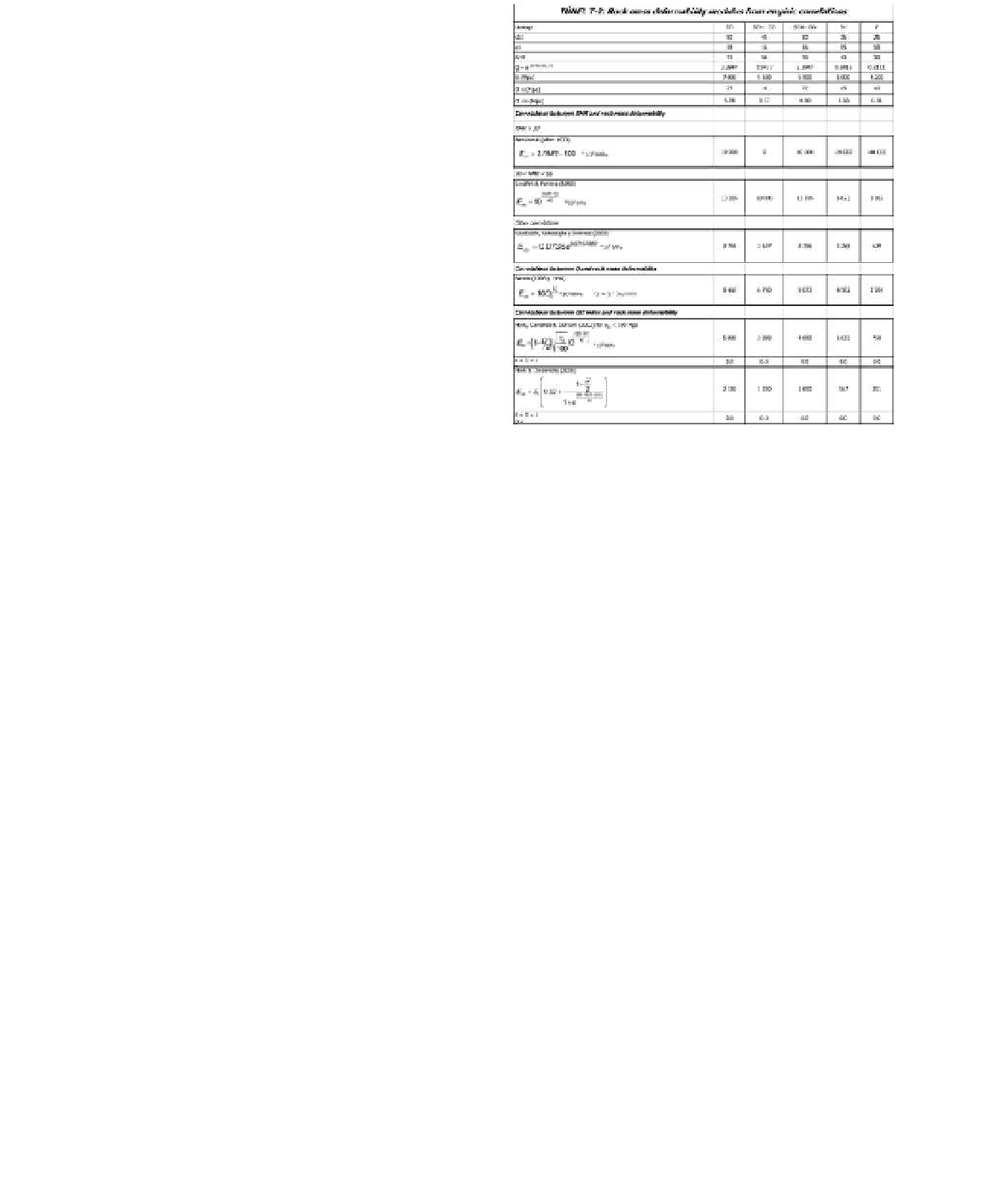Environmental Engineering Reference
In-Depth Information
There are more empiric correlations between
RMR and erm, one of the most accurate maybe
the kayabashi, Golceoglu and sonmez (2003)
equation:
e rm = 0.0736 e
0.0715 RMR
(GPa)
another geomechanic index widely used is Q,
proposed by Barton in 1974, its correspond-
ence with RMR index is done by the following
expression.
RMR = 9 * l n Q + 44
in a paper in 1996, Barton established the fol-
lowing correlation between the Q index and the
rock mass deformability modulus.
e rm = 10 * Qc
1/3
where Qc = Q * (σ
ci
/100) and σ
ci
is the unconfined
compression strength of intact rock.
hoek found that serafim & Pereira equation
is accurate in a good quality rock mass, but not
in worse rock conditions. Based on this hoek,
carranza and corkum suggest use the σ
ci
value to
correct the deformation modulus.
The following table summarizes the values of the
rock mass deformation modulus (erm) deduced
from the criteria explained above.
e rm = (1-D/2) *(σ
ci
/100)
0.5
* 10
(Gsi-10)/40
(Gpa),
for σ
ci
< 100 Mpa
5
DeFoRMaTion PoTenTial
oF The GeoTechnical UniTs
where D is a disturb factor (0 ≤ D ≤ 1).
Based in several data and tunnel auscultation
measurements in Taiwan and china, in 2006 hoek
and Diederichs introduced an expression that
assumes the following:
once the geotechnical parameters have been estab-
lished in paragraph 4 and the stratigraphy along
the tunnel estimated in figure 3, the deformation
potential of the geotechnical formations at the
tunnel depth can be ascertained by means of the
hoek-Brown failure criterion. according to hoek
and Marinos there is a relationship between the
ratio σ
cM
/γh and the tunnel convergency ε, where:
σ
cM
: unconfined compressive strength of the rock
mass.
γ: average specific weight of the rock mass
h: depth of tunnel
ε: % ratio of the tunnel radial deformation on the
tunnel radius
if we denote P
0
= γh, then:
- it's based on the best data collection of measure-
ments in tunnels.
- The maximum limit is given by deep tunnels
(unconfined and unweathered rocks).
- That maximum limit is altered by D factor
(hoek & carranza).
- Maximum erm value is given by Gsi between
90 and 100.
- it's for isotropic rock mass.
- To avoid erm grows to ininite when Gsi grows
too it's introduced sigmoides functions (s shape).
The result is:
ε = 0,2 × (σ′
cm
/P
0
)^
-2
D
1
−
a
−
1
.
(
ms am s
a
+− +
++
4
(
/
4
)
2
′
b
b
EE
=
002
.
+
GPa
σ σ
CM
=
rm
i
(
)
CI
60 15
11
+−
DGSI
21
(
)(
2
a
)
1
+
e
The following deformation potential classes are
proposed by hoek (2002).
where ei is the intact rock deformation modulus.
















